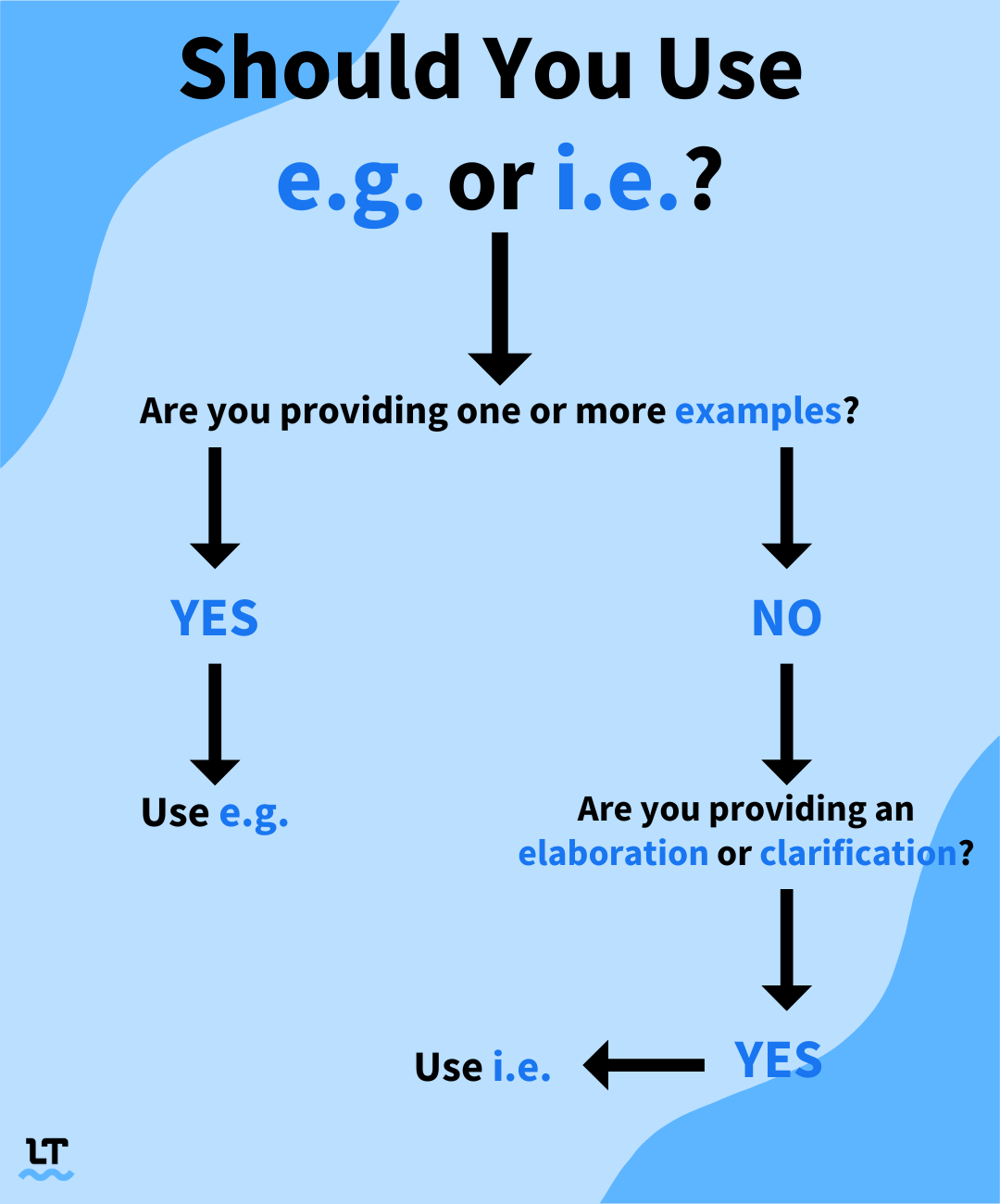What’s the Difference Between “i.e.” and “e.g.”?
You’ve probably come across the abbreviations “i.e.” and “e.g.”, but do you know what they stand for? We’ll go over what “i.e.” and “e.g.” mean and how to use them in a sentence.
- She loved reaching her destination by different means of travel (e.g., planes, trains, taxis, and subways).
- She always took the long route to get to her destination (i.e., instead of taking the expressway to downtown, she took the back roads to enjoy the scenery).
“e.g.” vs. “i.e”
E.g. and i.e. are two abbreviations that are commonly used in written English. They can be extremely useful while writing, as they help keep your text clear and concise.
However, e.g. and i.e. can’t be used interchangeably. Below, we’ll go over what e.g. and i.e. stand for and show you how to use them in your writing correctly.
What Does “e.g.” Mean?
E.g. is an abbreviation for the Latin expression “exempli gratia,” which translates to “for the sake of the example.” As you may have guessed, e.g. is used to introduce examples.
Popular to contrary belief, e.g. does not stand for example given. However, example given can still be used as a mnemonic device to help you remember that e.g. precedes examples.
Remember, e.g. is one of many alternatives you can use in place of for example.
How To Use “e.g.” in a Sentence
It’s important to use proper punctuation when using e.g. in a sentence to avoid confusing your audience.
E.g. can be found within a sentence with or without parentheses.
E.g. should always contain a period before and after the “g,” and a comma after it. This holds true whether you’re using them within parentheses or not.
When not using e.g. within parentheses, it’s common to find a comma before it in addition to the one after. However, this varies depending on which style guide you’re following.
What Does “i.e.” Mean?
I.e. is also an abbreviation for a Latin expression: “id est,” which translates to “that is.”
I.e. is used to elaborate or clarify the previous statement. It does not introduce examples. Although i.e. does not stand for “in essence,” you can use that as a mnemonic device.
How To Use “i.e.” in a Sentence
I.e. follows the same punctuation rules as e.g.
So, you can find it being used within a sentence with or without parentheses.
I.e. must always have a period before and after the “e,” along with a comma after the period, regardless of whether you’re using it in parentheses or not.
When not being used within parentheses, i.e. is also commonly found with a comma preceding it.
Keep in mind that both i.e. and e.g. are always lowercase and do not need to be italicized.

Use “i.e.” vs. “e.g.” Correctly In Your Writing
I.e. and e.g. are incredibly useful while writing.
Use the mnemonic device “example given” to remind you that e.g. is what precedes a brief list of examples. “In essence” can help you remember that “i.e.” is what precedes an elaboration or clarification.
If you want to make sure you’re using correct punctuation while using these abbreviations, use LanguageTool as your writing assistant. Not only will this advanced spelling and grammar checker correct punctuation errors, but it can also easily provide synonyms or rephrased sentences. Plus, it supports over thirty languages and is free to try!
